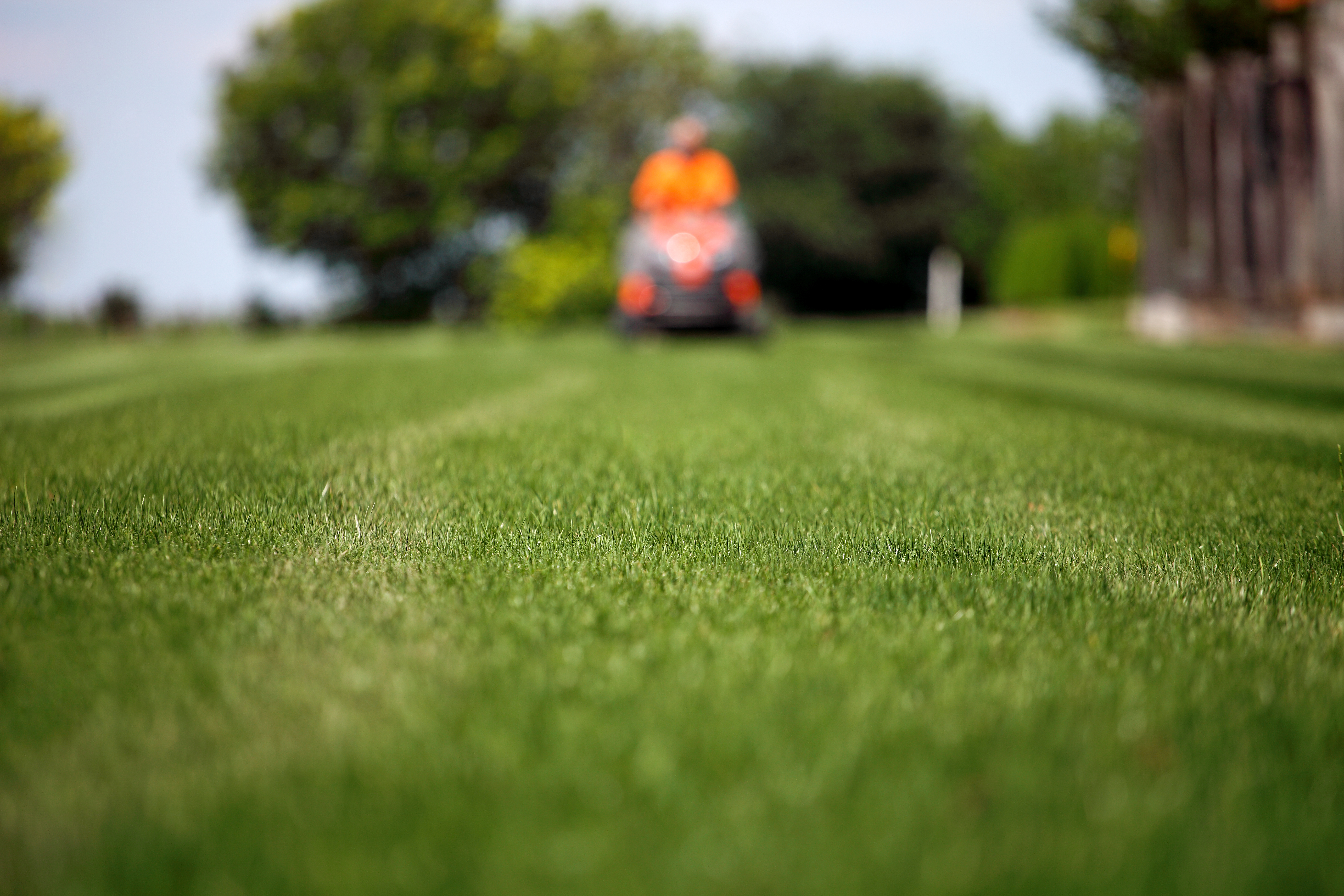A luxuriant lawn makes a perfect foil for flower borders and creates an emerald focal point in winter when color is in short supply. There are different types of turf for different situations but all lawns benefit from regular mowing, and care and attention in the spring and autumn.
Mowing
Mow grass whenever it is growing, provided the ground isn’t too wet or icy to walk on. In spring, mow once a week with the blades at their highest setting, and gradually lower them as growth accelerates. Use a box to collect the clippings, which can be composted, or use a “mulching mower” which doesn’t remove the grass but chops it into fine pieces, returning nutrients to the lawn. Rake off thick patches of clippings, which will damage the turf. In summer, a high-quality lawn may need cutting three times a week, but in autumn, as growth slows, once or twice a week should suffice.
Watering
In dry stages, water newly laid turf, freshly sown areas, and high-quality lawns. Leave established lawns unwatered, but stop mowing because longer grass helps protect the roots. The grass may turn brown, but will recover once it rains.
Water a new lawn every week in dry spells, until it is established. You can tell when fine lawns need watering because they lose their spring when walked on. Reduce water evaporation by using sprinklers early in the morning or at night. Move seep hoses by 8 inches every half hour.
Feeding
In dry periods, water newly laid turf, freshly sown areas, and high-quality lawns. Leave established lawns unwatered, but stop mowing because longer grass helps protect the roots. The grass may turn brown, but will recover once it rains.
Water a new lawn every week in dry spells, until it is established. You can tell when fine lawns need watering because they lose their spring when walked on. Reduce water evaporation by using sprinklers early in the morning or at night. Move seep hoses by 8 inches every half hour.
Weeding Option
Acidic lawns are prone to moss and weed growth. Check soil pH in winter, and raise it by applying ground chalk or limestone at a rate of 2 ounces per 10 square foot. Apply a lawn weedkiller in spring or summer, and repeat in early autumn. Organic gardeners can grub out creeping buttercups, daisies, and tap-rooted weeds, like dandelions, using an old knife.



